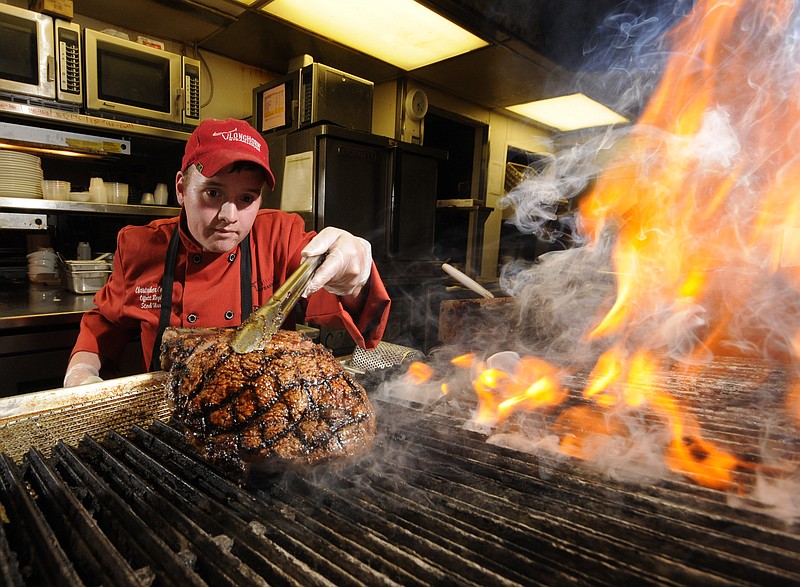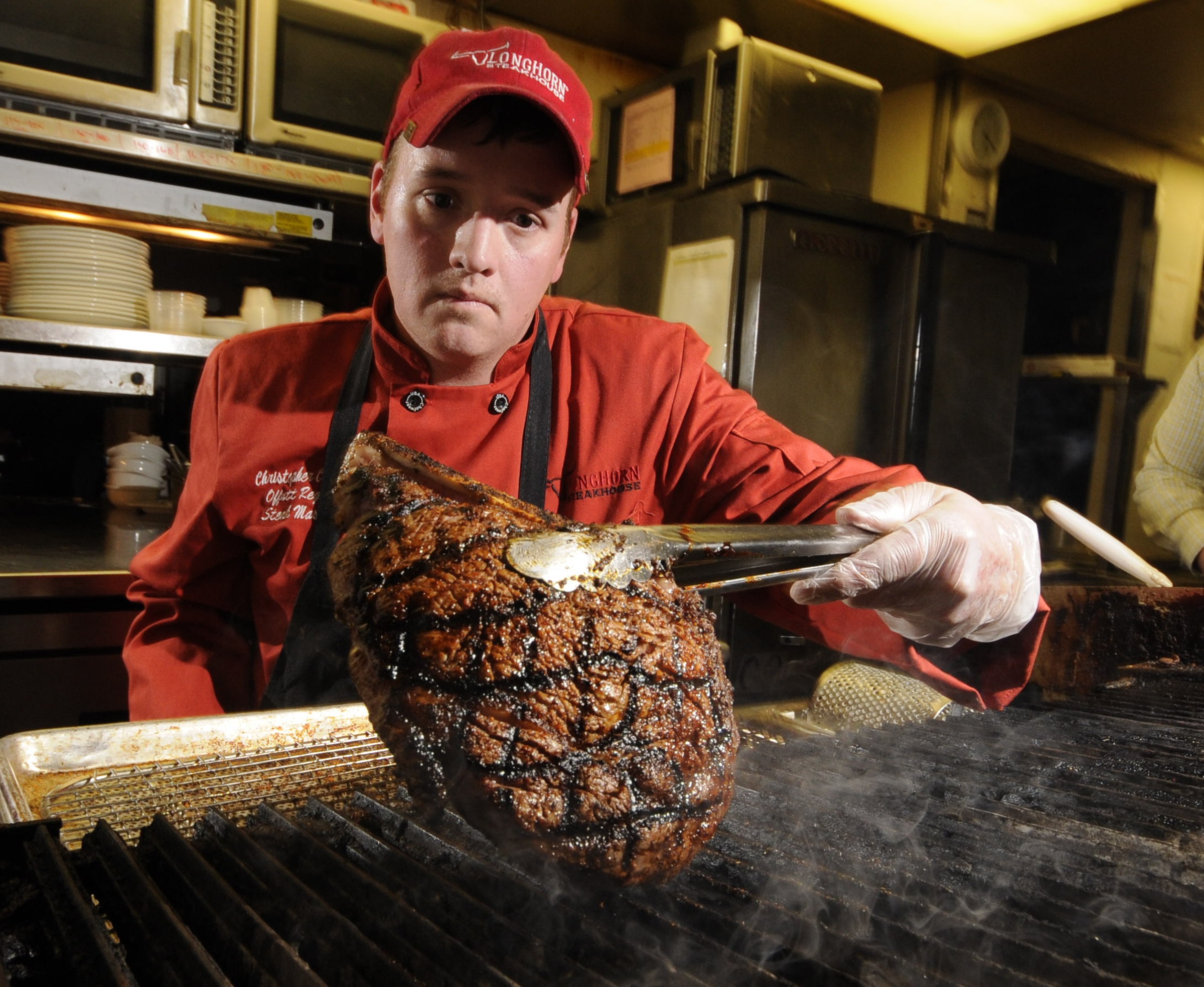If you're planning to fire up the grill this holiday weekend, Christopher Coats has some tips to up your game.
On an average weekend, Coats grills about 300 steaks over Friday and Saturday nights at LongHorn Steakhouse on Brainerd Road. Those hours of on-the-job experience combined with an encyclopedic knowledge about how to grill recently earned the 33-year-old the title of Steak Master.
Seasoned butters
Cilantro Butter 1 stick unsalted butter, slightly softened 6 cloves garlic, coarsely chopped 1/4 cup fresh cilantro leaves 1 to 2 teaspoons fresh lime juice Kosher salt Freshly ground pepper Combine butter, garlic, cilantro and one teaspoon lime juice in a food processor or with a mixer until smooth. Season with salt and pepper. Add more lime juice if desired. - Bobby Flay Garlic Butter 1 1/2 sticks unsalted butter, slightly softened 4 cloves garlic, coarsely chopped Kosher salt Freshly ground pepper Combine butter and garlic in food processor or with mixer until smooth. Season with salt and pepper. - Bobby Flay
Coats won the regional Steak Master Series, an in-house competition created by LongHorn to promote the restaurant's commitment to grilling expertise while sharpening employees' skills. According to a news release, Coats was one of only 60 team members from nearly 6,000 in the company to achieve the Steak Master distinction. After winning the regional round, he advanced to the division competition in Pineville, N.C., where he placed third, receiving $750.
Being crowned a Steak Master is "testament to his dedication to grilling expertise," says Paul Livrieri, executive vice president of operations at LongHorn.
The competition not only involves grilling, but a written exam on the chain's standards. Competitors are quizzed on recipes, prep procedures, timing of meats when grilling and more.
"In the first round in our home stores, we had to grill two steaks, make a salad and an appetizer, describe what was in them and how to cook the steaks," says Coats.
"At the regional round, we had to grill two steaks, make two appetizers and salad. At the district, we had to make Parmesan Crusted Chicken, a bone-in ribeye, a 6-ounce filet and an 8-ounce sirloin - all in 20 minutes."
Coats always planned to work in the food industry; he just didn't know it would be as a grillmaster. After graduating from East Ridge High School, he says, he hoped to go to culinary school but instead found work locally in the restaurant business.
Eleven years ago, his first job in the Brainerd Road LongHorn was "salad guy," he says with a grin, then he was promoted to salads plus manning the fried food station. More responsibilities were gradually added until he was promoted to grilling eight years ago. He credits Charles Ewton and John Castleberry, who is now managing partner at the Brainerd restaurant, with teaching him his grill skills.
Now Coats is passing those techniques along to his oldest son during the limited amount of free time he has.
"I'm not home enough to do a lot of cooking," he explains. "I work two jobs - my full-time job here at LongHorn and a part-time pizza delivery job. But when I am home, he enjoys getting to cook with me."
Here are Coats' five tips to help home chefs improve their grilling results.
* The grill's temperature should be 425 degrees when the meat goes on.
"Temperature is important to create a good sear,"says Coats. To make sure you're at the right temp, grill thermometers are sold at big-box stores and hardware stores.
* Always get a good sear to start.
Place seasoned meat on the grill for 4 minutes, then flip it and leave on second side for 4 minutes.
"Keep flipping every 4 minutes until the steak is done," says Coats. "The biggest mistake people make is flipping their steak too quickly. Patience is key. Flipping too much results in uneven cooking and will knock off the seasoning."
* Use a meat thermometer to judge internal temperatures of meat.
"Insert the thermometer into the side of the meat, not from the top. Heat rises bottom to top, so inserting the thermometer in the top of the meat won't result in a correct reading. If you have to insert the thermometer more than once, use the same hole," he says.
* Temperatures will tell you how rare the meat will be when cut.
Don't rely on guesswork or, even worse, cut into a steak while it's on the grill. The thermometer reading, when inserted into the side of the steak, is an accurate indication of how rare or well-done the meat should be.
"Everybody differs, but I use these temperatures to judge: For rare, 95-100 degrees. Medium rare, 115-125 degrees. Medium, 130-140 degrees. Medium well, 150-160 degrees. Well-done, 165-175."
* Let meat rest a minimum of one minute before cutting, preferably three to four minutes.
"Remember, meat continues to cook when it comes off the grill," explains Coats.
This is important to know because as meat cooks, proteins heat up and set; therefore, the firmer the meat, the more "done" it is. As proteins set, they push meat juices toward the center of the cut. By allowing meat to rest before cutting into the steak lets juices pushed into the center redistribute throughout the steak.
"Letting meat rest means your steak loses less juice when cut, and it makes the steak more tender," says Coats.
Once your steaks are ready, try garnishing with a dollop of seasoned butter (see accompanying box).
Contact Susan Pierce at spierce@timesfreepress.com or 423-757-6284.

